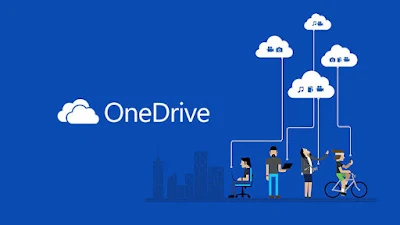OneDrive is a cloud storage service developed by Microsoft. It allows users to store files and data in the cloud, making them accessible from various devices with an internet connection. OneDrive is integrated with Microsoft 365 (formerly Office 365), providing seamless access to applications like Word, Excel, and PowerPoint.
Key features of OneDrive include file synchronization, collaboration tools, and sharing options. Users can collaborate on documents in real-time, share files or folders with others, and access their data across devices. OneDrive is often used in conjunction with Microsoft's suite of productivity tools to enhance document creation and collaboration.
How Onedrive Works?
OneDrive operates as a cloud storage service, allowing users to store and access files from various devices with an internet connection. Here's a simplified overview of how OneDrive works:
1. **Storage in the Cloud:** Users upload their files, documents, photos, and other data to OneDrive. This data is stored securely on Microsoft's servers in the cloud.
2. **Synchronization:** OneDrive provides file synchronization, ensuring that the files are mirrored across all devices linked to the same OneDrive account. Changes made on one device are reflected on others, maintaining consistency.
3. **Access from Anywhere:** Users can access their OneDrive files from web browsers, desktop applications (such as the OneDrive sync client), and mobile apps. This enables seamless access to files on different platforms.
4. **Collaboration:** OneDrive is integrated with Microsoft 365 applications like Word, Excel, and PowerPoint. Users can collaborate on documents in real-time, making edits and comments that are instantly visible to others working on the same file.
5. **Sharing and Permissions:** Users can share files or folders with others, controlling the level of access granted—viewing, editing, or commenting. This facilitates collaboration and sharing of content.
6. **Security Measures:** OneDrive incorporates security features like encryption (both in transit and at rest), two-factor authentication, access controls, and auditing to protect user data.
Is OneDrive Secure?
OneDrive incorporates several security features to protect user data. Some key security measures include:
1. **Encryption:** OneDrive uses encryption to secure files both during transmission (in transit) and while stored on Microsoft's servers (at rest). This helps safeguard data from unauthorized access.
2. **Two-Factor Authentication (2FA):** Users can enable two-factor authentication for an added layer of security, requiring a second verification step beyond just a password.
3. **Access Controls:** Users can set permissions for files and folders, controlling who has access and specifying whether they can view, edit, or share the content.
4. **Device Management:** Users can manage and control access to their OneDrive account on different devices, allowing them to revoke access from lost or unauthorized devices.
5. **Auditing and Reporting:** OneDrive provides auditing features that log user activities, allowing account owners or administrators to monitor file access and changes.
6. **Data Loss Prevention (DLP):** Organizations can implement DLP policies to prevent the sharing of sensitive information and ensure compliance with data protection regulations.
It's essential for users to stay informed about the available security settings and best practices to maintain a secure OneDrive experience.
Storage capacity of Onedrive.
OneDrive provides 5 GB of free storage for each Microsoft account. Users can purchase additional storage through Microsoft 365 subscription plans, which often include varying amounts of OneDrive storage along with access to Microsoft's productivity tools.
Storage capacities in Microsoft 365 plans can range from 100 GB to multiple terabytes, depending on the subscription tier. Keep in mind that these details might have changed, so it's advisable to check Microsoft's official website or the OneDrive app for the latest information on storage options and pricing.

